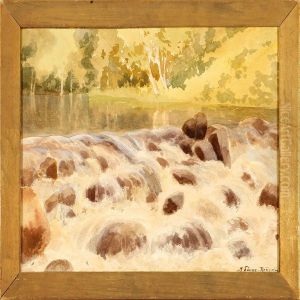Alexandr Alexandrovich Benois Paintings
Alexandre Nikolaevich Benois, often referred to as Alexander Benois, was an influential Russian artist, art critic, historian, and stage designer, born on May 3, 1870, in St. Petersburg, Russia. He was a founding member of the artistic movement Mir iskusstva (World of Art), which played a significant role in the Russian cultural renaissance at the turn of the 20th century. Benois came from a distinguished family of architects, musicians, and artists, which deeply influenced his path in the arts.
Benois's artistic career was multifaceted. He was not only a painter but also a graphic artist, book illustrator, and a designer for ballet and theater. His work was marked by a nostalgic fascination with 18th-century France and the history of his own Russian culture. In his early career, he collaborated closely with other members of the Mir iskusstva, including Sergei Diaghilev, who would later become the impresario of the Ballets Russes.
In 1901, Benois was appointed artistic director of the magazine Mir iskusstva, where he made important contributions to the graphic design and aesthetic of the publication. His work also extended to scenic design, and he is particularly renowned for his collaboration with Diaghilev on the Ballets Russes. One of his most famous contributions to ballet was the design for 'Le Pavillon d'Armide' which premiered in 1909, and his work on the original production of 'Petrushka' in 1911, for which he collaborated with Igor Stravinsky and choreographer Michel Fokine, is considered a landmark in the history of ballet.
As an art historian, Benois had a profound impact on the study of art, particularly with his work 'The Russian School of Painting', which offered a comprehensive overview of Russian art history. During his life, he wrote several seminal texts on art history and aesthetics. Benois's influence extended beyond Russia; in 1926, he moved to Paris, where he continued to work on theatrical designs while remaining active in the Russian emigrant community until his death on February 9, 1960.
Throughout his life, Benois remained dedicated to the arts, and his legacy is reflected in the numerous stage designs, illustrations, and writings he left behind. His work continues to be celebrated for its elegance, erudition, and contribution to the modernist movement in art and theater.

